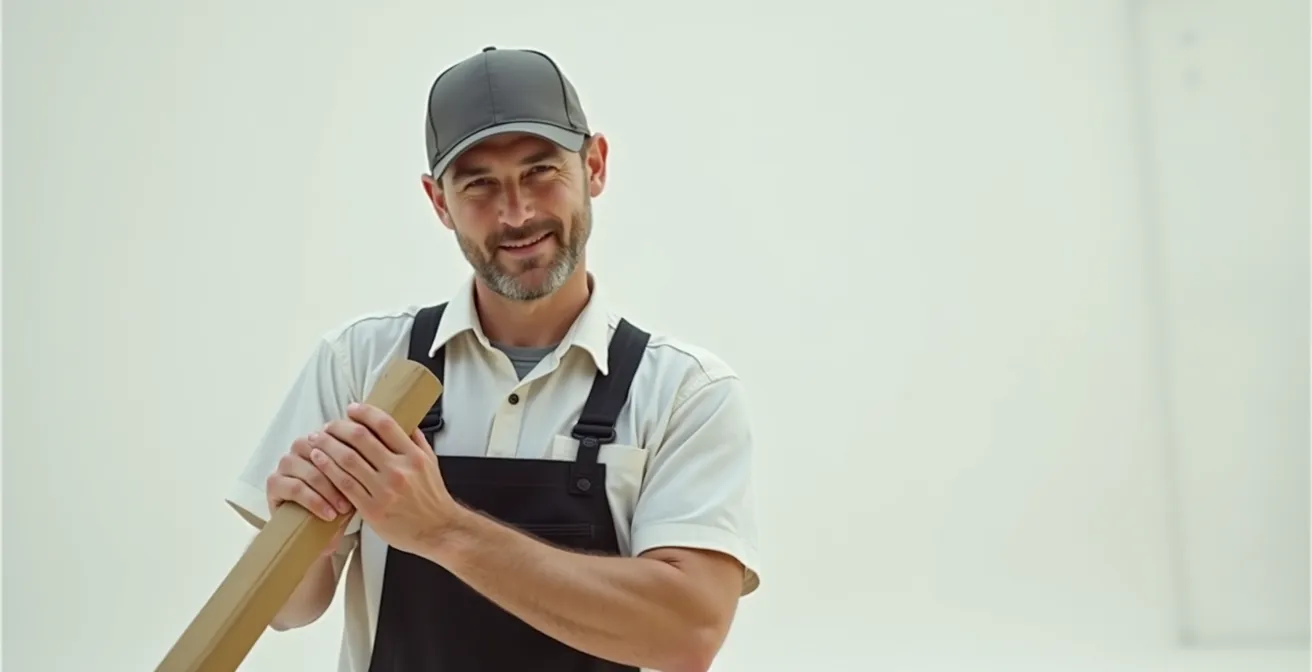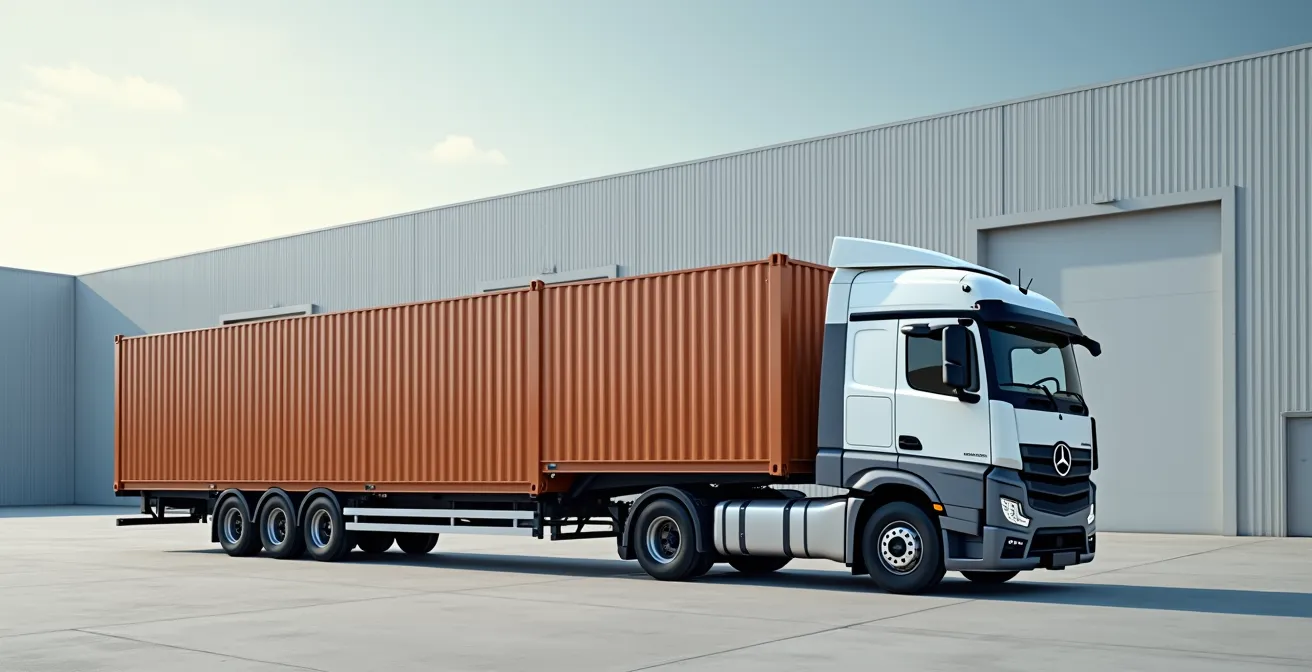
Embarking on a long-distance move often starts with a simple calculation: the cost of a rental truck versus the price quote from a moving company. This framing, however, misses the fundamental point. The decision is not merely about expense versus convenience; it’s about navigating a complex logistical challenge where unforeseen risks carry significant financial and emotional costs. A do-it-yourself approach transforms you into a project manager for a multifaceted operation you’ve likely never run before.
The core of the issue lies in treating an interstate relocation like a simple trip across town. In reality, it involves a cascade of interconnected tasks, from regulatory compliance to strategic packing and inventory management. Viewing the process through this lens reveals that engaging specialized professional moving services with astral.ms isn’t an indulgence but a calculated investment in efficiency, security, and peace of mind. It’s about mitigating the invisible risks that most people don’t see until it’s too late.
The Professional Advantage in Brief
- Risk Mitigation: Professionals manage the complex legal, logistical, and insurance challenges that amateurs often overlook.
- True Cost Efficiency: Factoring in hidden DIY costs like insurance gaps and time off work reveals the strong return on investment of hiring experts.
- Specialized Expertise: Movers use proven techniques and technology for everything from packing fragile heirlooms to optimizing transport routes.
- Guaranteed Accountability: Professional services provide a clear framework of liability, inventory management, and scheduling for a secure transition.
Navigating the labyrinth: unseen complexities of DIY long-distance moves
Many individuals underestimate the profound gap between a local move and an interstate relocation. The latter is not just a longer drive; it is an entirely different logistical undertaking. The planning chasm is vast, requiring foresight into state-specific regulations, route optimization to account for weigh stations and road restrictions, and a timeline that buffers against potential delays. What seems straightforward on a map becomes a complex web of interconnected dependencies.
Beyond simply renting a truck, a DIY mover must contend with a barrage of regulatory hurdles. This includes securing the right permits for crossing state lines, understanding varying transportation laws, and ensuring the vehicle and its contents comply with all legal requirements. A single oversight can lead to fines or significant delays. This domino effect is a primary risk; a small packing error can lead to damaged valuables, a scheduling miscalculation can result in extra lodging costs, and poor loading can cause dangerous shifts in transit.
What are the biggest risks of a DIY long-distance move?
The top risks include underestimating planning complexity, overlooking legal and regulatory requirements for interstate travel, and the high potential for damaged goods, which leads to unexpected costs and significant stress.
The consequences of amateur mistakes are often significant. In fact, a staggering 51% of Americans reporting broken items during moves underscores the financial risk of improper handling and packing. Professionals are trained to prevent these very outcomes through systematic processes.
This reality is what positions professional movers as essential partners. They bring an institutional knowledge of these complexities, transforming a potentially chaotic process into a structured and predictable one.

Navigating this labyrinth requires more than just brute force; it demands expertise. This is precisely where the value of a professional service becomes undeniable, turning a maze of potential problems into a clear path forward.
The planning and coordination for long-distance moves require comprehensive expertise to avoid costly errors and delays.
– National Van Lines, The Benefits of Hiring Professional Long Distance Movers
Key Planning Steps for a Successful Long-Distance Move
- Start early and create a detailed moving timeline.
- Research permits and legal requirements for interstate moves.
- Inventory and label all belongings carefully.
- Book reliable professional movers well in advance.
The true ROI of professionalism: quantifying the value beyond the price tag
A common pitfall in planning a long-distance move is focusing solely on the upfront quote while ignoring the hidden expenses of a DIY approach. These unaccounted-for costs can quickly accumulate, often making the seemingly cheaper option far more expensive in the end. A true cost-benefit analysis requires deconstructing every potential expense, from fluctuating truck rental and fuel prices to the often-overlooked cost of your own time.
To fully grasp the financial picture, it’s essential to compare the variables side-by-side. Professionals build most costs into a single, transparent price, whereas a DIY move involves a series of separate, often unpredictable, purchases.
| Cost Factor | DIY Move | Professional Move |
|---|---|---|
| Truck Rental & Fuel | High and variable | Included & Optimized |
| Packing Supplies | Often overlooked | Included with protective materials |
| Time Off Work | Potentially extended | Minimized by experts |
| Damage & Repair Costs | High risk | Mitigated with insurance |
Furthermore, the financial impact of mistakes must be quantified. Damaging an heirloom or essential piece of equipment isn’t just an inconvenience; it’s a direct financial loss. Delays can cascade into extra hotel nights, lost wages, or complications with housing contracts. Professionals mitigate these risks through comprehensive insurance and liability coverage, a safety net that DIY movers rarely have. The seriousness with which moving companies approach this is reflected in the value they place on insurance, which can generate a potential annual revenue from moving insurance of $27,500 for a single operation.
Ultimately, the greatest return on investment is the reclamation of your mental and emotional energy. Entrusting the logistics to experts allows you to focus on the human side of the transition: saying goodbye, preparing for a new job, and settling your family. As experts at MoveNation suggest, working with professional movers saves time and reduces potential costly damages, providing a peace of mind that is priceless. Taking this approach enables you to arrive at your destination ready to begin your new chapter, rather than exhausted from managing the move itself. If financial pressures are a concern, it’s always wise to rRead about smart financial planning to prepare for such a significant life event. This investment in professional service is not just about avoiding loss; it’s about ensuring a stable and positive start to a new chapter in your life, providing a solid foundation from which to grow.
Beyond mere efficiency: how professionals elevate your relocation experience
Modern professional moving companies operate less like traditional truckers and more like sophisticated logistics firms. They leverage technology to bring a level of transparency, security, and predictability that is impossible to achieve in a DIY move. With an estimated 91% of moving companies utilizing AI technology, the industry has embraced innovation to enhance the customer experience.
This tech-forward approach includes real-time GPS tracking of shipments, advanced communication tools for constant updates, and logistics software that optimizes everything from route planning to load balancing. The result is a process that minimizes uncertainty and empowers the customer with knowledge and control.
AI-Powered Route Optimization Impact
Lunardi Moving Services implemented AI logistics optimizing routes, resulting in a 15% reduction in transit times and a nearly 10% decrease in fuel consumption, enhancing efficiency and sustainability.
This focus on a superior experience extends to the physical handling of belongings, especially when it comes to high-value or sentimental items. Professionals are trained in the art of transporting fragile possessions, employing specialized techniques and materials that go far beyond standard boxes and bubble wrap.
Whether it’s custom crating for artwork, anti-static packing for electronics, or temperature-controlled transport for sensitive heirlooms, experts possess the tools and knowledge to ensure these items arrive in pristine condition. This mastery provides a level of security that brings profound psychological relief, which is especially important when relocating to a new home.
Technology like GPS tracking and AI scheduling delivers a predictable and secure moving process that reduces client anxiety.
– Lunardi Moving Services, The Future of Moving: How Technology is Transforming
Finally, there’s a significant psychological advantage to surrendering control. A major life transition like a long-distance move is inherently stressful. By handing over the complex operational management to a trusted team, you free yourself from decision fatigue and prevent burnout, allowing you to focus on what truly matters: your new life ahead.
Key Takeaways
- A DIY long-distance move involves complex logistical and regulatory challenges far beyond those of a local move.
- Hidden costs in DIY moves, such as insurance gaps and potential damages, often make them more expensive than professional services.
- Modern movers use technology like AI and GPS tracking to provide a transparent, secure, and predictable relocation experience.
- The true value of professionals lies in risk mitigation, specialized expertise with fragile items, and reclaiming your mental energy.
The professional edge: what sets expert long-distance movers apart?
The defining characteristic of an expert mover is a commitment to a systematic, strategic process. This begins with packing and inventory management, which is treated as a foundational step for ensuring accountability and a smooth unpacking experience. Professionals don’t just fill boxes; they preserve, label, and document items with meticulous care, creating a detailed inventory list that serves as a master checklist throughout the journey.
Best Practices for Strategic Packing and Inventory Management
- Use systematic labeling with clear room and content descriptions.
- Inventory and photograph valuable and fragile items.
- Pack by room and keep detailed lists for faster unpacking.
- Use professional-grade packing materials designed for specific item types.
Another key differentiator is the ability to offer flexible and customizable solutions. Expert movers understand that no two relocations are identical and provide a range of services that can be tailored to evolving needs. This flexibility is often highlighted in customer feedback, with one client praising a company because, “The team was incredibly flexible and adapted to our last-minute storage needs without hesitation. Their service made our complex move feel manageable.”
These adaptable services ensure that whether you need partial packing assistance, temporary storage during a complex transition, or specialized handling for unique items, the solution fits your specific circumstances.
| Service | Description | Benefits |
|---|---|---|
| Partial Packing | Clients choose which items they want packed by professionals. | Cost-effective, saves client time. |
| Specialized Storage | Secure storage options during move transition. | Flexible timing, protects belongings. |
| Inventory Management | Detailed documentation of all items moved. | Accountability and ease of unpacking. |
Ultimately, the professional edge is the guarantee of a seamless transition. It’s a promise that extends beyond mere transport to include coordinated delivery, adherence to timelines, and proactive communication. This comprehensive approach ensures that your belongings don’t just arrive, but arrive safely, on schedule, and with a clear process for placement in your new home.

This commitment to a smooth, end-to-end experience is what transforms a move from a stressful ordeal into an exciting and positive step forward.
Frequently asked questions on professional moving
Is hiring professional movers for a long-distance move really worth the cost?
When you factor in hidden DIY costs like truck rental, fuel, insurance, packing supplies, and the value of your time off work, professional movers often provide a superior return on investment. Their expertise also minimizes the risk of costly damages to your belongings, making it a financially sound decision for most long-distance relocations.
What kind of insurance do professional movers offer?
Professional movers are required to provide basic liability coverage, known as Released Value Protection, at no extra cost. However, this offers minimal protection. Most companies also offer Full Value Protection for an additional fee, which ensures that any lost or damaged items will be repaired, replaced, or you will be compensated for their current market value.
How far in advance should I book a long-distance moving company?
For a long-distance move, it is highly recommended to book movers at least two to three months in advance, especially if you are moving during peak season (summer months, holidays). This ensures better availability, more competitive pricing, and ample time for you and the company to plan the logistics properly.
Can I pack some of my own things to save money?
Absolutely. Most moving companies offer flexible service options, including partial packing services. You can save money by packing non-fragile items like books, clothes, and bedding yourself, while leaving the more delicate and valuable items for the professionals to handle with their specialized materials and techniques.